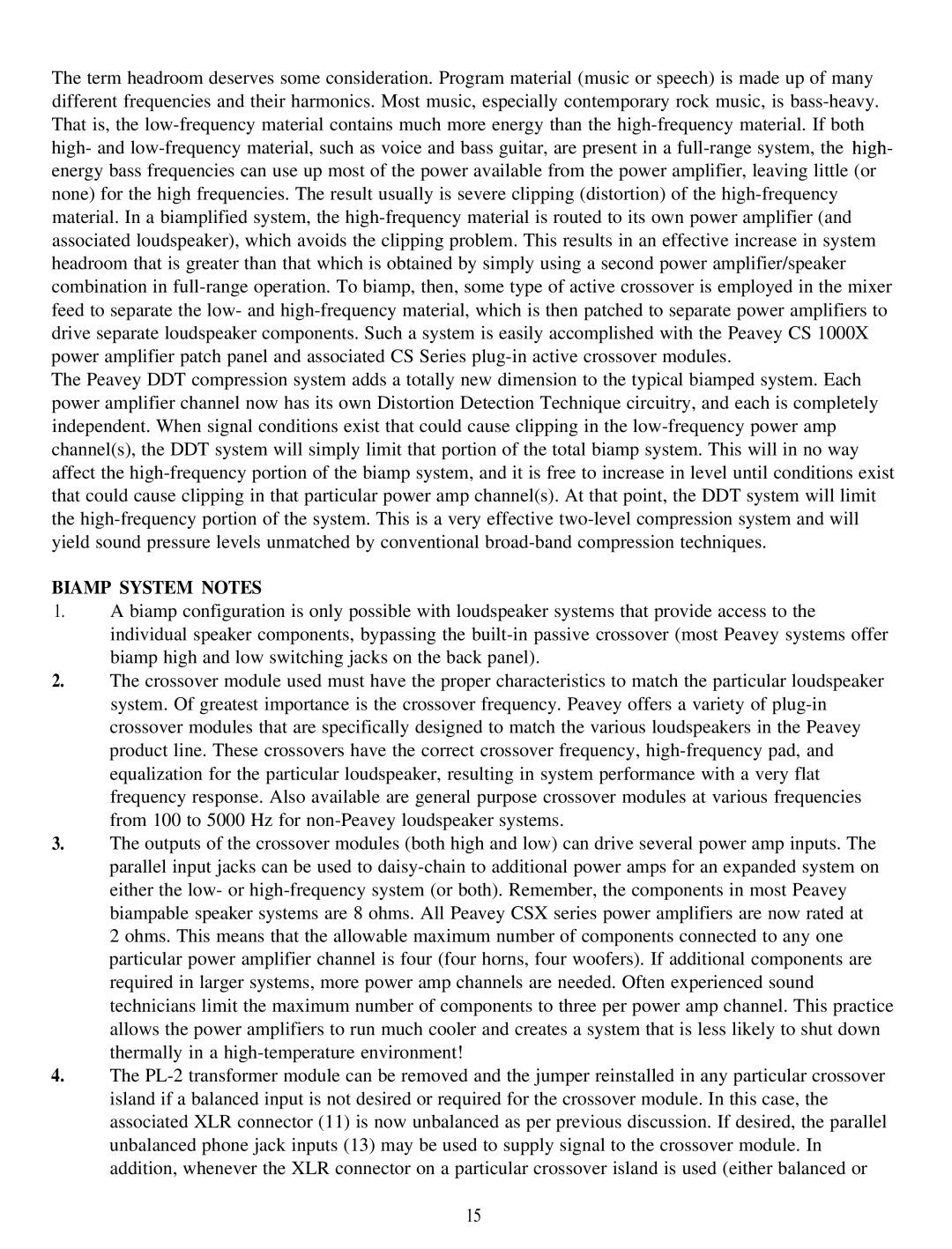CS 1000X specifications
The Peavey CS 1000X is a professional power amplifier designed to deliver exceptional sound quality and reliability for live performances and installed sound applications. Renowned for its rugged build and innovative technologies, the CS 1000X has become a staple in various settings such as concert venues, clubs, and corporate events.One of the standout features of the CS 1000X is its power output. It provides 1,000 watts of continuous output at 4 ohms, making it capable of driving large audio systems with ease. This significant power ensures that even the most demanding musical passages can be reproduced accurately without distortion. Its high-efficiency design enables it to deliver exceptional performance while consuming less energy, making it not only powerful but also environmentally friendly.
The amplifier utilizes a patented Peavey Dynamic FET technology, which enhances the overall sound quality by providing a wide frequency response and minimal distortion levels. This technology also contributes to the amplifier's impressive dynamic range, ensuring that both soft and loud sounds are reproduced with clarity and precision.
The CS 1000X features advanced circuit protection systems, including Peavey's exclusive DDT (Dynamic Distortion Termination) clipping protection. This feature prevents distortion and potential damage to connected speakers during peak output, allowing for safe operation under high-demand conditions. Additionally, the amplifier includes a built-in cooling fan that ensures optimal thermal management, prolonging the lifespan of the unit.
In terms of connectivity, the CS 1000X is equipped with a variety of input and output options. These include balanced XLR inputs and both binding post and SpeakON outputs, providing flexibility for different configuration needs. The rear panel also features level controls, allowing users to adjust the output level to suit the requirements of their specific audio setup.
Compact yet powerful, the Peavey CS 1000X is designed with a rugged chassis that can withstand the rigors of transport and installation. This durability, paired with its technical capabilities, makes it an excellent choice for both professional musicians and sound engineers.
In summary, the Peavey CS 1000X power amplifier stands at the forefront of audio technology, combining robust power, advanced protection features, and versatile connectivity options. Its ability to deliver high-quality sound makes it an indispensable tool for any serious audio application.
